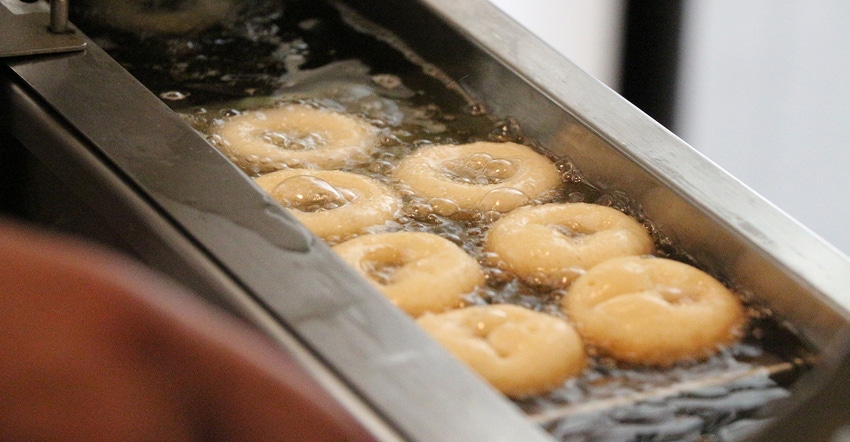October 1, 2017

Farming is like any other family business. You make day-to-day decisions on what’s best for your business right now. But you are also focused on the long-term, making decisions that will ensure your business’s viability for the next generation.
Some soybean farmers in eastern Illinois have a marketing opportunity that fits very well with this business acumen.
High oleic soybeans offer farmers premium opportunities to impact their business now, with long-term customer potential to reach 18 million acres, which would make it the fourth-largest grain and oilseed crop in the United States, behind corn, commodity soybeans and wheat.
As acreage expands, more Illinois farmers will get the opportunity to plant high oleic soybeans.
Premiums average around 45 cents per bushel, but vary depending on location. The premiums and yield are two factors that attracted Kyle Lottinville, who farms near Sheldon, Illinois.
“The yield from my high oleic soybeans is very comparable to my commodity soybeans,” he says.
Now Lottinville sees the long-term business potential of high oleic soybeans.
“The high-oleic soybean is going to be a big plus for consumers for health reasons alone,” he says.
Changes in federal policy and consumer attitudes to trans fats have cost soybean farmers more than 4 billion pounds in soybean demand. But high oleic soybeans have zero trans fats, so it is poised to win back that lost market volume without taking away demand for commodity soybean oil, which still meets the needs of many food and industrial customers.
Today, high oleic soybeans are grown on more than 625,000 acres – primarily in Indiana, Ohio and Michigan, and including areas of Nebraska, Minnesota, Iowa, Illinois, Pennsylvania, New Jersey and the Delmarva Peninsula.
With so many states teaming up with Illinois to grow soybeans, the food industry is taking notice of high oleic soybeans. New locations are being added every year, and current programs are expanding their offerings.
Though high oleic soybeans are a soft identity preserved (IP) product, Lottinville was pleased with the grain handling and delivery options.
“Growing high oleic soybeans hasn’t really been any different than growing commodity soybeans,” he says. “Cleaning equipment might take an extra five minutes, but it’s less intense than other premium varieties, like non-GMO.”
“With comparable yields, the premium counts for more, especially as more delivery options are made available.”
Farmers can find locations requesting high oleic soybeans and their delivery options at SoyInnovation.com.

INNOVATION BEYOND THE BUSHEL
©2017 United Soybean Board
About the Author(s)
You May Also Like




